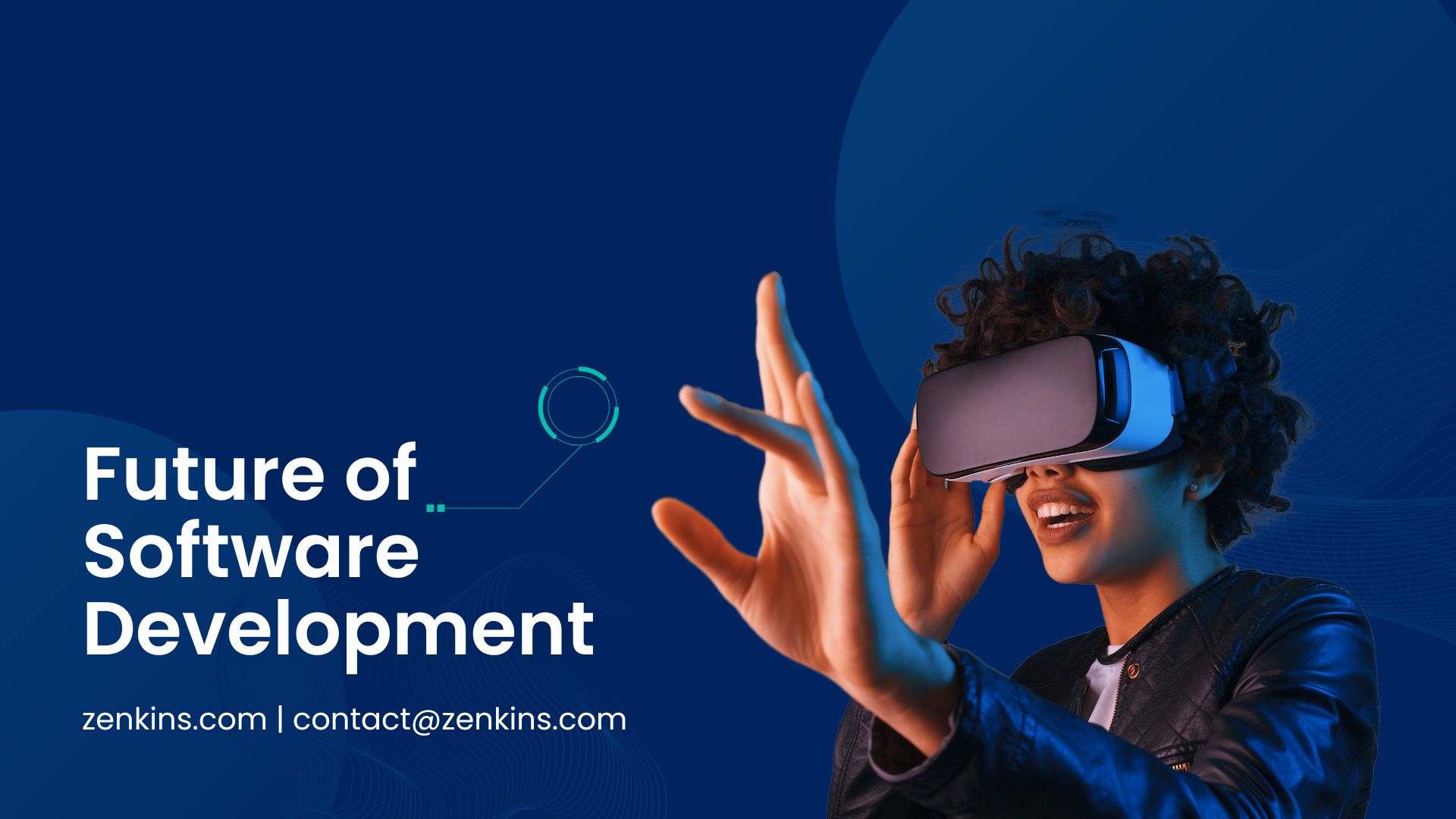Software development has come a long way since its inception, and it continues to evolve at an unprecedented rate. In recent years, we have witnessed significant changes in software development, and this trend is set to continue. The future of software development is an exciting prospect, and it promises to bring many advancements that will revolutionize the way we work, live, and interact with technology. Explore the emerging trends in software development and the implications they will have on the industry and beyond.
If you’re ready to outsource your software development needs, don’t hesitate to contact us today. Our team of experts is ready to help you take your project to the next level. Contact Now!
Trend #1: Low-code Development
Low-code development is one of the most significant trends in software development today. It refers to the use of visual interfaces and drag-and-drop tools to create software applications without the need for traditional coding. Low-code development platforms enable users to develop applications faster, more efficiently, and with minimal coding knowledge. They allow business users, not just developers, to create applications that meet their specific needs.
Low-code development platforms have gained popularity in recent years because they offer several advantages. For example, they help companies reduce their development costs and accelerate the time-to-market for their applications. They also enable business users to create applications that are tailored to their needs and can be easily updated and maintained over time.
According to Gartner, by 2024, low-code application development will account for over 65% of all application development activity. This growth is driven by the need for faster development cycles and the growing demand for digital transformation across all industries.
Trend #2: Artificial Intelligence (AI) and Machine Learning (ML)
Artificial Intelligence (AI) and Machine Learning (ML) are rapidly changing the landscape of software development. These technologies have the potential to automate repetitive tasks, improve the accuracy of predictions, and enable new levels of personalization and customer engagement.
AI and ML are already being used in various software development applications, such as chatbots, recommendation engines, and fraud detection systems. In the future, AI and ML will play an even more significant role in software development, helping developers create smarter, more efficient, and more personalized applications.
According to Gartner, by 2025, more than 50% of new enterprise applications will have AI embedded in them. This growth is driven by the need for intelligent automation and the increasing demand for personalized customer experiences.
Trend #3: DevSecOps
DevSecOps is an emerging trend in software development that combines development, security, and operations into a single continuous process. It aims to integrate security into every stage of the software development lifecycle, from design to deployment.
DevSecOps addresses the challenges of traditional software development processes, which often treat security as an afterthought. By integrating security into every stage of the development process, DevSecOps helps ensure that applications are more secure and that security risks are identified and addressed early in the development cycle.
According to Gartner, by 2023, 60% of organizations will have adopted DevSecOps principles, up from just 20% in 2019. This growth is driven by the need for increased security and the recognition that traditional security approaches are no longer adequate in today’s fast-paced development environment.
Trend #4: Quantum Computing
Quantum computing is an emerging technology that promises to revolutionize the world of software development. Unlike traditional computing, which is based on binary digits (bits), quantum computing is based on quantum bits (qubits). This difference allows quantum computers to solve certain problems that are impossible for traditional computers.
Quantum computing has the potential to solve complex problems in fields such as finance, cryptography, and drug discovery. It also has the potential to enable new forms of artificial intelligence and machine learning.
According to Gartner, by 2025, quantum computing will have commercial viability in specific use cases. This growth is driven by the potential for quantum computing to solve problems that are currently unsolvable with traditional computers. However, there are still many challenges to overcome before quantum computing becomes mainstream, such as the need for stable and error-free qubits.
Trend #5: Internet of Behaviors (IoB)
The Internet of Behaviors (IoB) is an emerging trend in software development that combines data from various sources to monitor and influence behavior. It uses data from sources such as social media, location tracking, and smart devices to understand consumer behavior and provide personalized experiences.
IoB has the potential to revolutionize the way businesses interact with customers, providing personalized experiences that are tailored to individual preferences and needs. However, it also raises concerns about privacy and data protection.
According to Gartner, by 2025, half of the world’s population will be subject to at least one IoB program. This growth is driven by the increasing demand for personalized experiences and the availability of data from various sources.
Trend #6: Edge Computing
Edge computing is an emerging trend in software development that involves processing data at the edge of the network, closer to where it is generated. It aims to reduce latency and improve performance by processing data in real-time, rather than sending it to a central server for processing.
Edge computing has the potential to revolutionize industries such as manufacturing, transportation, and healthcare, by enabling real-time monitoring and control of processes. It also has the potential to enable new forms of applications, such as autonomous vehicles and smart cities.
According to Gartner, by 2023, the number of organizations using edge computing will increase by 50%. This growth is driven by the need for real-time processing and the increasing demand for IoT devices.
Trend #7: Augmented Reality (AR) and Virtual Reality (VR)
Augmented Reality (AR) and Virtual Reality (VR) are emerging trends in software development that are changing the way we interact with technology. AR and VR are being used in various applications, such as gaming, education, and training.
In the future, AR and VR are expected to play an even more significant role in software development, enabling new forms of communication, collaboration, and entertainment. They also have the potential to transform industries such as healthcare and real estate, by providing immersive experiences that enable better decision-making and communication.
According to Gartner, by 2023, 25% of enterprises will adopt AR and VR as part of their digital transformation strategy. This growth is driven by the increasing availability of affordable devices and the potential for AR and VR to provide new forms of engagement and interaction.
Conclusion
The future of software development is an exciting prospect, and it promises to bring many advancements that will revolutionize the way we work, live, and interact with technology. Emerging trends such as low-code development, artificial intelligence and machine learning, DevSecOps, quantum computing, Internet of Behaviors (IoB), edge computing, and augmented and virtual reality (AR/VR) are set to play a significant role in shaping the future of software development.
These trends offer many opportunities for businesses to improve their operations, enhance customer experiences, and create new products and services. However, they also raise concerns about privacy, security, and ethical implications.
As software development continues to evolve, it is essential to keep up with the latest trends and technologies to stay ahead of the curve. By embracing emerging trends and technologies, businesses can take advantage of new opportunities and stay competitive in today’s fast-paced digital landscape.




